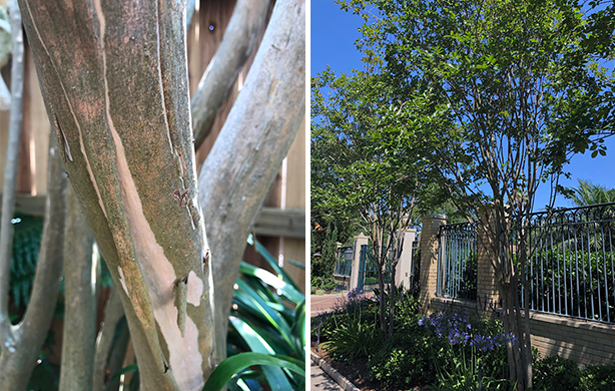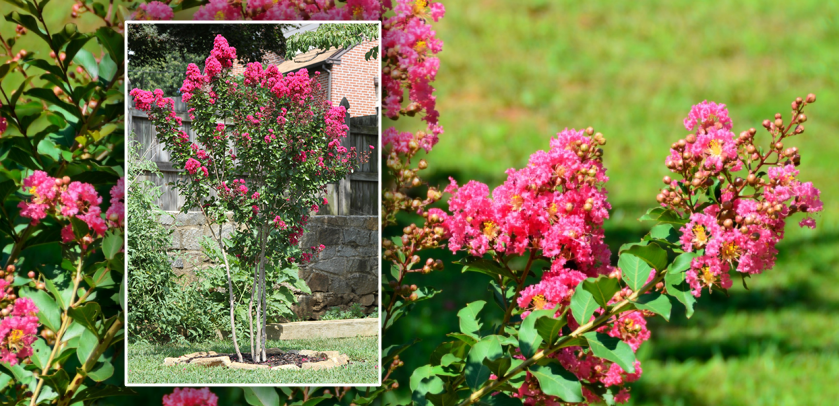There are many different varieties of Crape Myrtles but a limited number that thrive in South Texas. With the proper cultivar and proper placement, they will provide color and form to your landscape for many years. They do love the sun and need a half a day of sunlight or more. All of the below varieties are drought tolerant once established and are mildew resistant. They all bloom clusters of crepe-like blooms.

Our favorites are:
(Listing From Tallest To Shortest)
| Basham | up to 30′ tall | lavender-pink blooms |
| Natchez | up to 25′ tall | white blooms |
| Arapaho | up to 20′ tall | red blooms with maroon tinged foliage |
| Red Rocket | up to 15′ tall | ruby red blooms with dark green foliage |
| Dynamite | up to 15′ tall | fire red blooms |
| Catawba | up to 15′ tall | purple blooms |
| Zuni | up to 12′ tall | purple blooms |
| Tonto | 8′-10′ tall | dark red blooms |
| Hopi | up to 10′ tall | light pink blooms |
| Ebony Flame | up to 10′ tall | dark foliage with red blooms |
| Ebony Ivory | up to 10′ tall | dark foliage with white blooms |

*Please note – most dwarf varieties do not do well in our area without pampering.
From the above, the Basham Party Pink Crape Myrtle provides the fastest and most shade, growing up to 30′ tall.
When selecting your variety, make sure you give it plenty of space, height and width. As with all trees, trim as needed to eliminate branches from rubbing against each other and prune off lower “twiggy” growth, but do not “top” prune. If you purchase a Crape Myrtle as a young plant, you can select which trunks you want to keep and get rid of the rest to give it the form you want it to have as a mature plant.
It’s a wonder to watch Crape Myrtles go from ordinary to extraordinary in a matter of days as they start blooming in late spring. Look down most neighborhood streets to find a multiple of white, pinks, reds and purples high above homes. Crape Myrtles are a beautiful long-lived addition to your landscape. They are cold hardy, great color for summer, provide fall colored foliage and interesting bark (exfoliating), and drought tolerant once established.
We think Crape Myrtles are a winner for landscapes and will give you years of enjoyment!

-Sally & Debbie



Reader Interactions